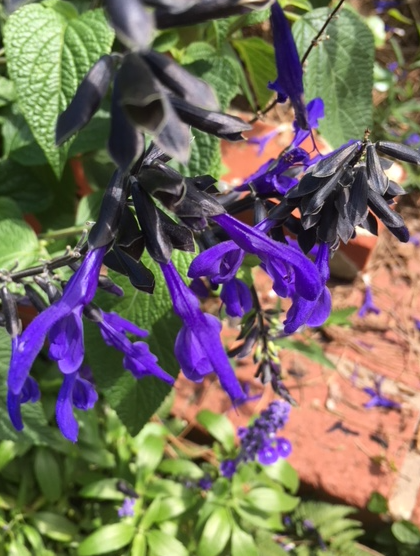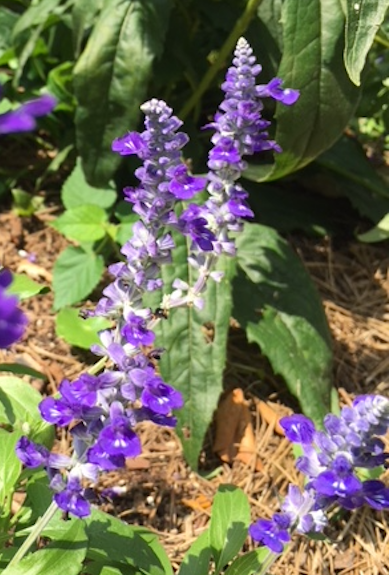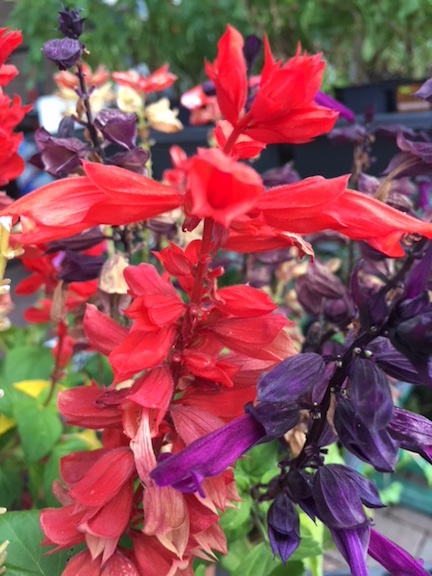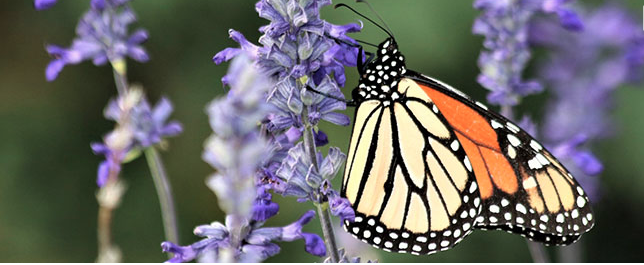I love my garden sages. And, when I stopped to count, I was surprised at how many different species grow in my sunny garden beds. Salvias (or sages) have a lot going for them – they are beautiful, easy to care for, deer resistant, drought tolerant AND are magnets for pollinators, including bees, hummers and butterflies. Another BIG plus for me is that many of my Salvia plants bloom in shades of blue that are absolutely stunning.

Probably my favorite (at least for this year!) is the “Black and Blue” Salvia guaranitica. It grows tall (up to about 40 inches) and has long tall spikes of black calyx (which surround and protect the buds) that open into rich purplish blue flowers.

Growing nearby is the smaller blue sage called Mealycup, which I always thought was a bit of an unfortunate name until I read that both the common name and the species name (farinacea) come from the Latin word “farina” which means flour or meal and is so named because of the whitish powder on the upper stem and flower buds. This species is native to Texas and Mexico and grows about 12 – 24 inches tall.

Both the Blue and Black and the Mealycup are considered tender perennials. They are hardy to horticultural zone 8 so Atlanta is right on the cusp. Mine did not survive the winter last year but this year I’m going to treat them to an extra layer of mulch and see what happens.
Perhaps the most used Salvia is S. splendens, or the bedding salvia which comes in that brilliant scarlet red color. Though red is the most common, it can also come in purple, lavender, yellow or white. All the bedding salvias have heart shaped leaves.

The word “Salvia” comes from the Latin “salvere” which means “to heal” and was given to this genus because of its medicinal value. There are over 900 species in the genus and the variety is impressive. The common cooking herb, sage, is also closely related. Salvia was dedicated to the Greed god, Zeus, and the Roman god, Jupiter. The ancient Greeks believed Salivas were good for enhancing memory.

Some species are used as flavoring some as medicines, some as dyes, and some, when ingested, are dangerous hallucinogens. But all are lovely plants to include in the garden – and your visitors, winged and otherwise, will thank you.
